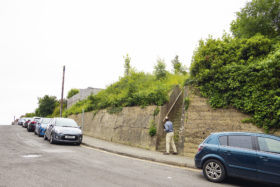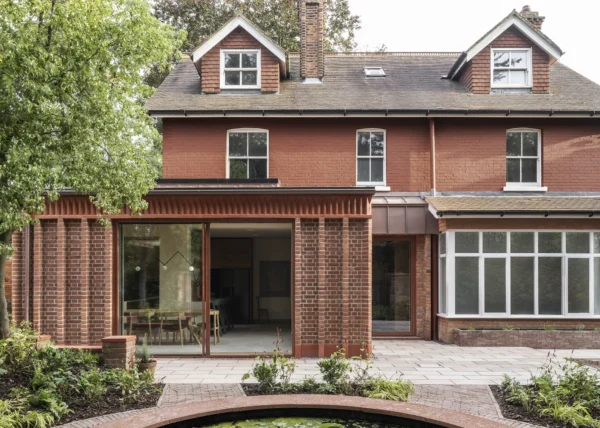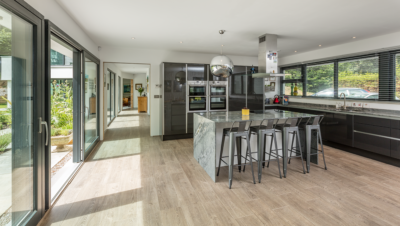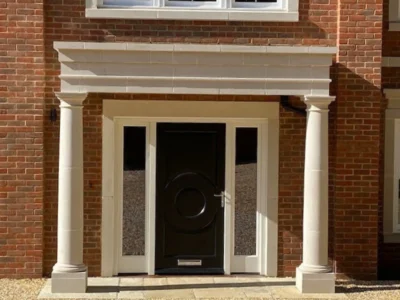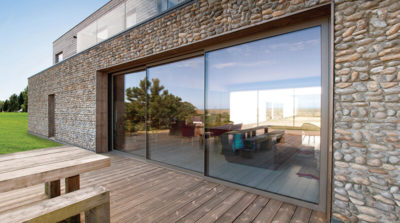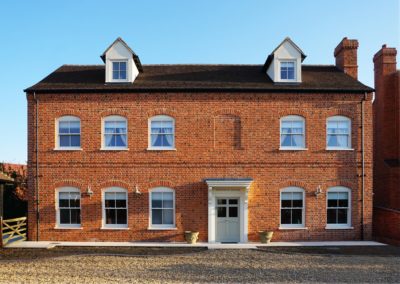Land Appraisal: Two Plots with Planning Permission
George Hampson has spent quite some time looking for suitable land on which to build a large, five-bedroom family home. He’d like something rural, but good plots in the countryside are few and far between.
He’s found a promising looking opportunity on the market, but it’s complicated by virtue of there being two sites, for sale together or separately, but with only one planning permission covering both. Could this situation work out for George?
Two plots
The land is situated about a mile from a large village, along a quiet country road. It’s next to a small row of houses on one side, and fields on the other and opposite.
The site used to be a timber yard, with a sprawl of buildings, large piles of logs and frequent comings and goings of heavy vehicles.
- WhoGeorge Hampson
- WhatTwo rural plots for sale with one planning permission for both sites. Will this situation complicate the opportunity to build one new five-bedroom home?
- WhereNorfolk
The land owners have done well to trade all of this in for planning permission for two big family houses, both fronting the road and with a shared access between them, which then splits off to each plot.
The sites are about one third of an acre each – level, rectangular and mainly grass, with some hard surfacing here and there left over from the wood yard.
There are trees to the back of one of the plots, but otherwise they look entirely straight-forward to build on.
Current planning permission
Detailed planning permission was granted a year ago for two five-bedroom properties, slightly different to one another, but each with an attached double garage with storage space above.
The designs are traditional, with tile-hung upper elevations over brick ground floor walls. Both will be topped with clay tile roof coverings. Considering the size of the plots, the houses are situated quite close to the road, but this might have been to fit in with the pattern of nearby buildings.
The planning consent comes with a fairly modest array of conditions, requiring approval of external materials, adherence to a landscaping plan and compliance with measures to mitigate ecological impacts.
A lot of information had been submitted with the application, including landscaping details, which resulted in fewer restrictions. Interestingly, no conditions needed to be met before permission was granted – though the materials choice must be agreed before works progress above ground level.
Planning permission challenges
Whilst the permitted scheme offers two slightly different design options, both with
the potential to suit George’s needs, he’s quite rightly concerned about one planning permission covering both sites.

The sites are about one third of an acre each
If the two plots were to be bought and developed together, there would be no problem. But George is worried that buying one means he’ll be tied in with the other via the planning permission. Meaning, for example, if the other plot didn’t sell – or if it sold but the owners weren’t in a hurry to build straight away – George could find himself unable to progress with his project.
While you’d think common sense would prevail at the council in this sort of situation, and that they might cut him some slack to get his build underway, that cannot be relied on.
In practice, the best thing for him to do would be to make a new application, solely on his preferred plot of the two. This would produce permission with conditions specific to the one plot, enabling it to be built independently from the other. Even with separate consent, there would still be the shared access drive to consider, and George would need to discuss this with his solicitor to ensure the costs of construction would be fairly split.
Another challenge arising from the single planning permission for two plots is that there is a theoretical CIL liability, here totalling £80,000. Needless to say George wouldn’t want to get lumbered with even half of that amount.
By applying for a new permission, he could claim the self-build exemption and ensure he wouldn’t have to pay any CIL at all.
Getting a new planning permission in this situation, where there’s existing consent in place, shouldn’t be too difficult. George could take this opportunity to adjust the approved design to suit his exact requirements.
As long as the changes were relatively minor, there would be a high chance of success. But he’d need the cooperation of the seller as well; otherwise he’d have to re-do the ecological study and landscaping scheme that went with the original planning application.
Buying the plot
For George to buy one of these plots, he’ll need to negotiate a satisfactory way forward with the vendor, enabling him to secure a separate permission on his site before completing the purchase. He’ll need either a conditional or option contract, to protect him from getting gazumped if a developer popped up willing to buy the plots together.
Signing a contract that delays completion of his purchase until after he has permission will probably be the simplest way forward, especially given the strong likelihood of success with an application that’s not too different to what’s already permitted.
George will need to make sure his solicitor is familiar with this type of contract. This is because it should guard against scenarios where permission is granted only subject to onerous and unexpected conditions, or the application is refused and time is needed for an appeal or re-submission.
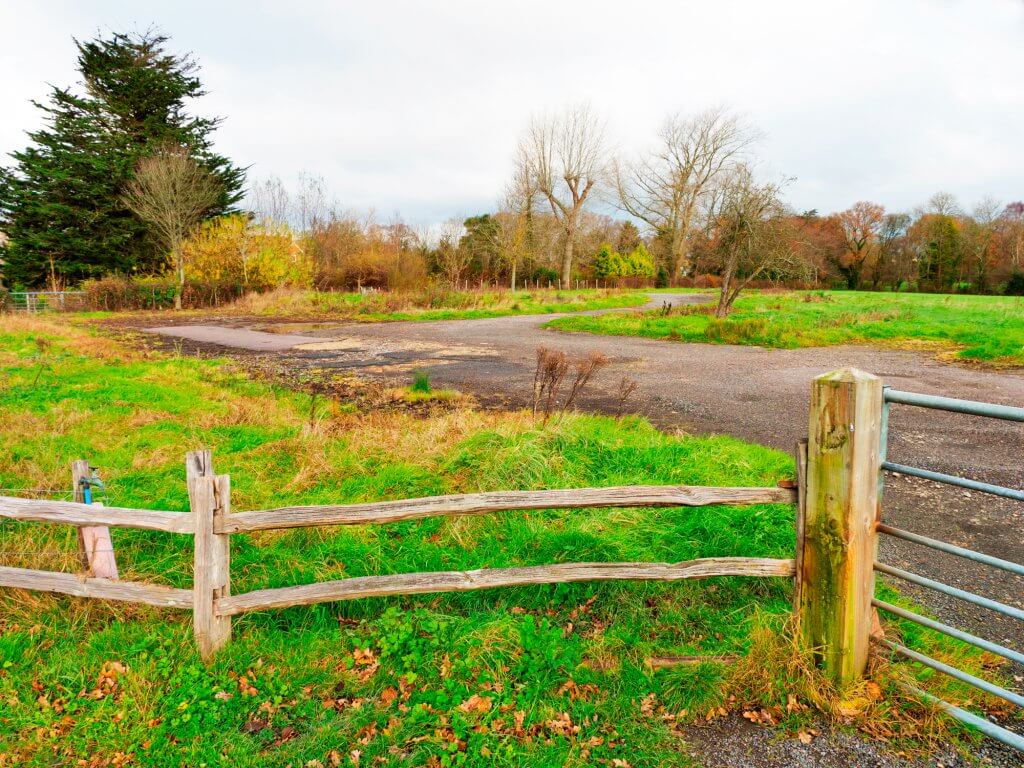
The site has planning permission for two five-bedroom homes
His solicitor would need to address the shared access to ensure it’s clear who is responsible for constructing it, how the costs should be split and how maintenance should be dealt with. While these measures are essential to protect George’s interests, it will remain to be seen whether the vendor is prepared to sell on this sort of basis.
Having gained planning permission, the vendor might think the plots are sufficiently certain to enable a buyer to pay the full development value and then adjust the designs post-purchase. If that was the case then George would have to take a view on the risks.
A chat with the planning officer who dealt with the original application would be one way of seeking reassurance and formal pre-application advice would be another. The latter could take a few weeks or months, and George would need to find out the speed of the council’s response before embarking down that route.
Conclusions
On the one hand, this site offers the pick of two excellent plots with permission in place for the exact type and size of house that George would like to build.
On the other, the planning situation is at best messy, and it’s essential that he obtains a new permission to build on just one of the sites before buying. That way he’ll avoid paying a hefty CIL bill and reduce the risk of delays if the other plot doesn’t sell or isn’t built quickly.
Much depends on how realistic the vendors are about the current situation. With hindsight, they’d have been much better off obtaining two planning permissions in the first place.
That would have made selling the plots separately a simpler business and if they sold to self-builders arguably one that would yield the highest return, due to the large saving on CIL.
As things stand, George needs to tread carefully, but this is a site that’s well worth exploring further.































































































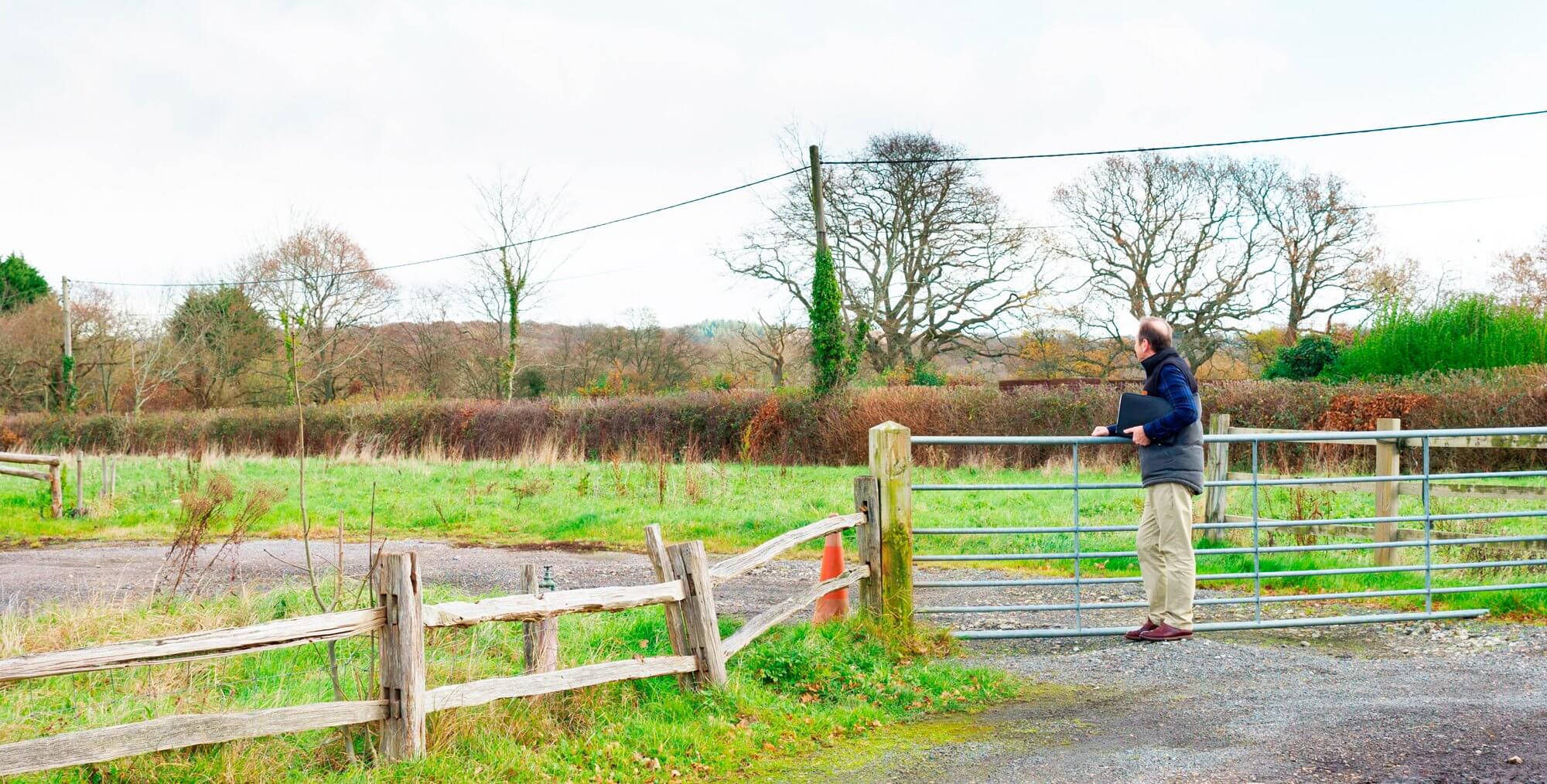
 Login/register to save Article for later
Login/register to save Article for later

